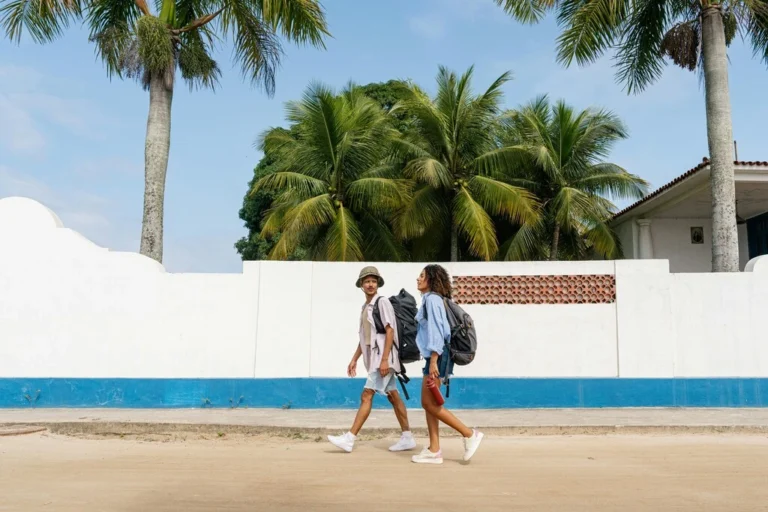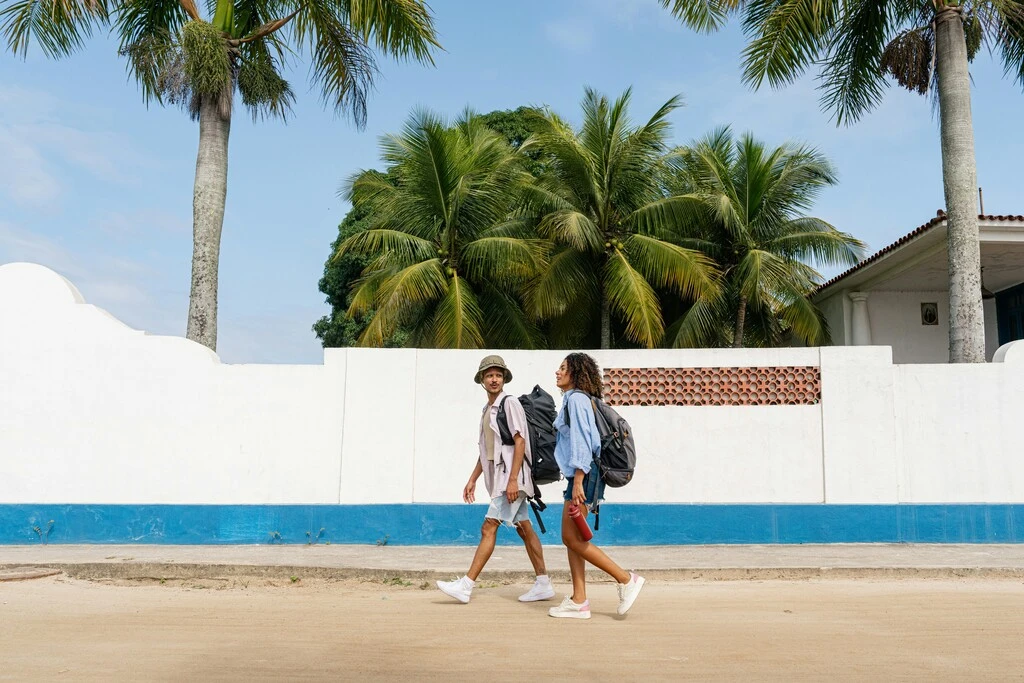There are so many myths about full time traveling families. Rumors, misinformation, and all sorts of wrong info float around. I think the modern full time traveler movement hasn’t been around too long, so there just isn’t enough information out there yet. Fair enough.
We have been traveling full time since 2019 and have learned a lot (unfortunately, also the hard way).
In this blog post, I’m going to bust those myths and reveal the truth about full-time traveling families. Let’s get started!
Myths About Full Time Traveling Families
Myth#1: It’s All Just a Vacation
Many people think that families who travel full-time are just on a permanent vacation. No work, no school, just staying in beautiful places and snapping a few photos on the beach for social media. That’s so far from the truth!
Anyone who visits us and sees our daily life says, “Wow, what an amazing life! But it’s so much harder than conventional life at home.” They are right. In fact, we have a lot to do, constantly organizing and planning.
As full-time travelers, we still have all the regular tasks of home life, plus all the travel-related ones. We need to book flights, find new accommodations, locate schools or camps, and get used to new places all the time. On top of that, we have to figure out visa and tax regulations at our new destinations. So, no, it’s not just a vacation (but all the work is worth it!).

Myth #2: It’s Incredibly Expensive
This myth can go both ways—it can be true, but it doesn’t have to be. You can definitely travel full-time on a budget. If you’re okay with local accommodations rather than Western standards, homeschooling instead of expensive international schools, and slower, cheaper travel options, you can save a lot.
For us, our full-time travel lifestyle is pretty pricey because we prioritize convenience while traveling with small kids. But there are plenty of ways to save money, like booking long-term stays for better deals. One of my favorite tips is to arrive at a new place, explore the area a bit, and then search for houses on Airbnb or Facebook Marketplace. Contact the owners directly for a better rate. In most cases, it works like a charm!
Here’s what we currently spend for our life in Koh Phangan, Thailand, as a full time traveling family:
Monthly Cost of Living in Koh Phangan
🏠 Housing: 44,000 THB ($1,195) – for a 2bdr house in Sri Thanu
🛒 Groceries: 10,300 THB ($301) – we shop mostly at supermarkets and local markets
🥗 Restaurants: 57,000 THB ($1,548) – we mostly eat western food
🛵 Transportation: 4,100 THB ($111) – we own 2 scooters and have to pay for gas and workshops
👶 Childcare/Education: 55,000 THB ($1,490) – we pay for school and kindergarten + playground and occasionally nanny
🏋️ Sport: 8,500 THB ($330) – we go to a gym and take yoga lessons
💆♀️ Personal Care: 12,690 THB ($344) – for massages, nails, and hair
🥳 Fun & Activities: 22.000 THB ($597) – for example, waterparks, museums, diving, kids experiences
___________________________________
Total: 193,790 THB = $5,263
Check out my article about the digital nomad budget to learn more about the initial costs and cost of living of a digital nomad family.
Myth #3: The Kids Won’t Get a Good Education
I feel like education options for full time traveling families are rapidly evolving. There are so many new resources that didn’t exist even five or ten years ago. We meet families who homeschool, use online tutors, or hire local teachers to come to their homes.
Our approach is a bit unconventional for a digital nomad family. Our oldest daughter attends an international school in Koh Phangan, Thailand, following a traditional education path. She’s been to international schools in Bali, Chiang Mai, and Bangkok too.
Our youngest, at three years old, is already attending her sixth international kindergarten. Kids adapt really well to new environments, and we’ve had no problems so far. In fact, it’s been great to see how quickly they adjust and make new friends.

Myth #4: The Kids Won’t Have Friends
This is a tough one because it’s true that it’s harder for kids to form and maintain close friendships when they move around a lot. But it’s not impossible. It all comes down to the parents.
As soon as you arrive at a new place, start looking for social opportunities for your kids through schools, kindergartens, camps, playgroups, or even a simple Facebook post saying you’re looking for friends for your child. You’ll be surprised at how many people respond!
Once your kids make friends, stay in touch with the parents and arrange as many playdates as possible. When you move on, keep the kids connected through pictures, voice messages, or video calls.
Myth #5: You Have to Sell Everything and Give Up Your Life
We did sell everything, and I love the feeling of traveling with just three suitcases and a backpack. Living minimally gives you a clear mind and lets you focus on what’s really important. But not everyone needs to go all-in right away.
Many full time traveling families keep their home and some belongings, storing them with family or in storage units. You can also try the lifestyle for a year as a gap year or sabbatical.
This way, you don’t have to quit your job or give up everything immediately. You can ease into it and see if it’s right for you. Or you can try out to be a part-time traveling family.
In this article, I wrote about how to gain more freedom without quitting it all.
👉 You might also find these articles interesting:
– The Digital Nomad Parents Survival Guide
– The 15 Best Digital Nomad Family Destinations
– The Honest Truth About Living in Bali with Kids
– The Ultimate Guide to Full-Time Family Travel
My Personal Thoughts on the Full Time Family Travel Lifestyle
You know, full-time traveling with your family is a massive leap. It means that your entire life is flipped upside down. It means that you barely have any more routines and definitely less personal space. You no longer have any childcare routines with grandparents or neighbors, you face communication barriers with those around you and a lot of isolation.
Added to this is the lack of financial security, as you are usually no longer in the social system of your home country. All of this is the harsh reality.
Despite this, I have never once considered giving it all up in the past few years. Why? Because no other lifestyle can offer me this kind of freedom. Under no other circumstances can I spend so much time with my family, travel the world, learn so many new things, and simply make life so much richer.
In my opinion, every minute of extra stress and organization is worth the feeling of freedom and independence.
Every little nervous breakdown is forgotten when my daughters come home from school, speak several foreign languages fluently, and talk enthusiastically about their new friends.
Did you experience one of the hurdles I mentioned? Could you imagine living the life of a full time traveling family? I’d love to hear your comments.
Thanks for reading and for making me part of your day! Yours, Lulu






